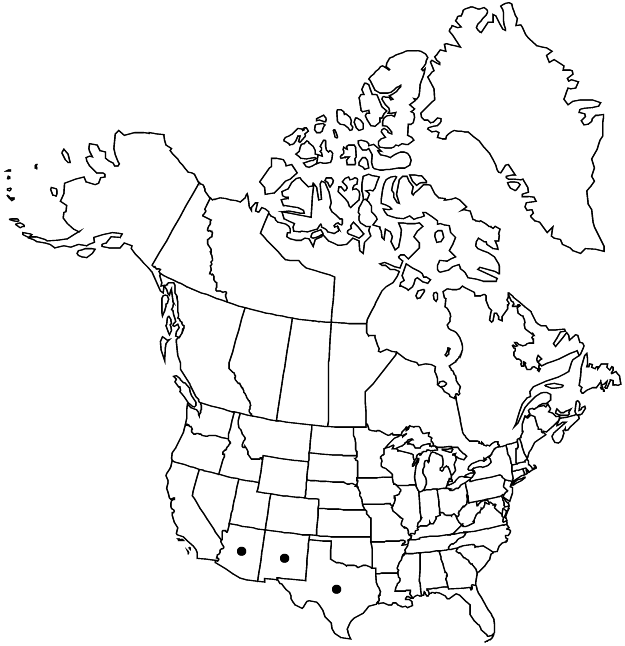Drymaria pachyphylla
Contr. U.S. Natl. Herb. 16: 121. 1913.
Plants annual, succulent, glabrous, glaucous. Stems nearly prostrate, radiating pseudo-verticillately from base, 10–20 cm. Leaves appearing whorled; not stipulate; petiole 2–8 mm; blade ovate to suborbiculate, (0.2–)0.5–1.3 cm × 4–10 mm, base obtuse to rounded, apex ± obtuse. Inflores axillary, congested, 3–12-flowered umbelliform clusters. Pedicels shorter to longer than subtending bracts at maturity. Flowers: sepals with 3 or 5 obscure veins usually not confluent apically, oblong to broadly elliptic (herbaceous portion similar), 2–3.5 mm, subequal, apex obtuse (herbaceous portion generally acute), not hooded, glabrous; petals 4-fid for 1/2 or less their length, 2.5–3 mm, 2/3–1 times as long as sepals, lobes 1-veined, vein unbranched, linear, outer pair 1/2 length of petal, each with narrower, slightly shorter lobe on inner flank, trunk laterally denticulate, base abruptly tapered, apex ± rounded. Seeds olive green to black, teardrop-shaped (with elongate or crescent-shaped lateral thickening), 1.1–1.3 mm; tubercles marginal, minute, elongate.
Phenology: Flowering spring–late summer.
Habitat: Heavy, saline soils, desert flats, river bottoms, playa margins
Elevation: 1200-1500 m
Distribution

Ariz., N.Mex., Tex., Mexico (Chihuahua, Coahuila, Durango, Nuevo León).
Discussion
Drymaria pachyphylla is highly toxic to livestock.
Selected References
None.